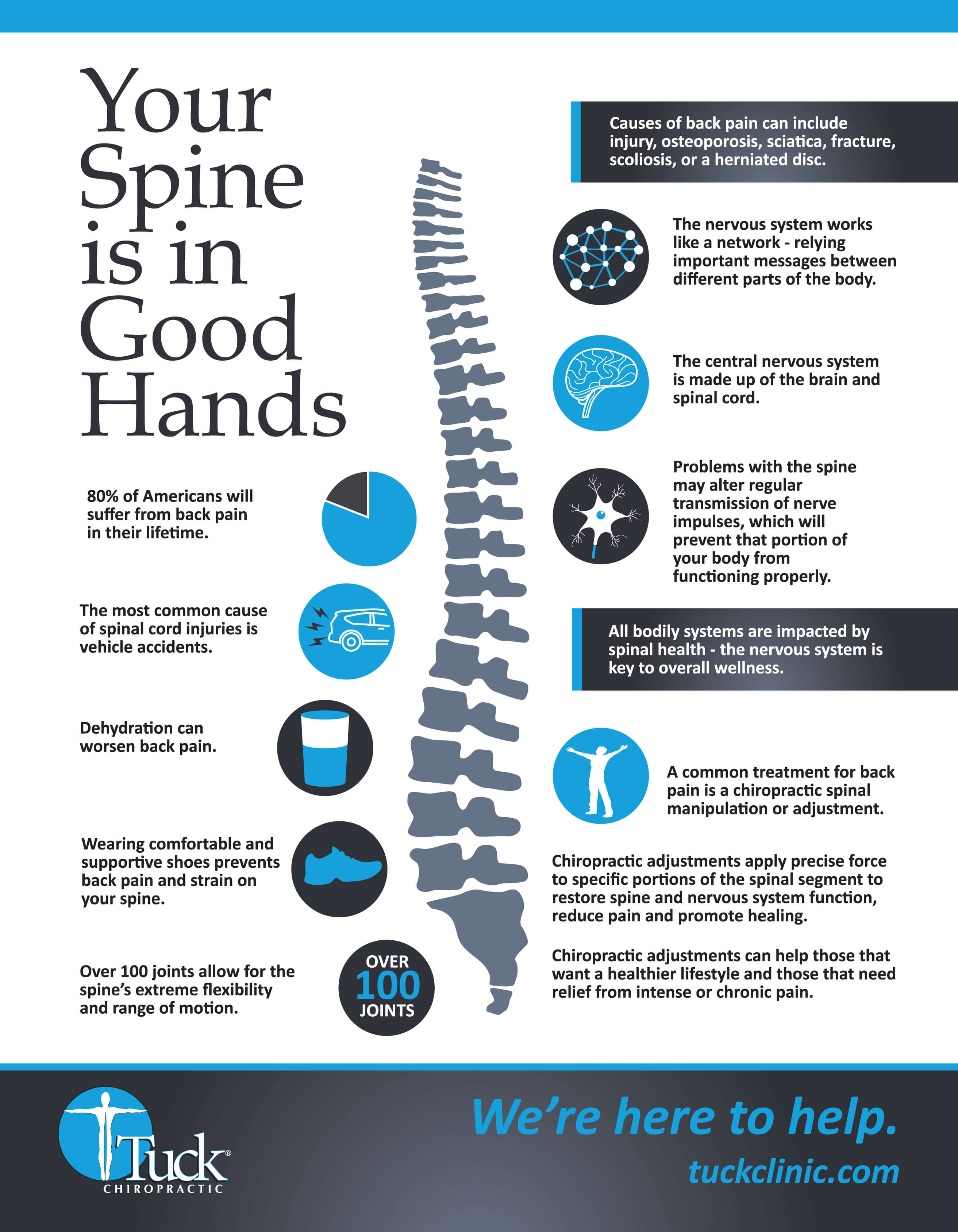The Top Daily Behavior That Add To Back Pain And Exactly How To Avoid Them
The Top Daily Behavior That Add To Back Pain And Exactly How To Avoid Them
Blog Article
Team Writer-Love Secher
Preserving proper position and staying clear of common mistakes in everyday activities can considerably impact your back health and wellness. From how family care chiropractic sit at your desk to just how you raise hefty items, little changes can make a huge distinction. Envision chiropractor meaning without the nagging neck and back pain that prevents your every move; the option may be less complex than you believe. By making a couple of tweaks to your daily routines, you could be on your means to a pain-free existence.
Poor Position and Sedentary Way Of Living
Poor pose and a sedentary lifestyle are 2 major contributors to neck and back pain. When you slouch or inkling over while resting or standing, you placed unneeded strain on your back muscles and spinal column. This can cause muscle mass discrepancies, tension, and eventually, chronic pain in the back. Additionally, sitting for extended periods without breaks or physical activity can compromise your back muscles and bring about rigidity and pain.
To deal with bad stance, make an aware effort to sit and stand directly with your shoulders back and aligned with your ears. Keep in mind to maintain your feet flat on the ground and avoid crossing your legs for prolonged durations.
Including routine extending and strengthening exercises into your everyday routine can also aid improve your position and reduce back pain related to a sedentary way of living.
Incorrect Training Techniques
Improper training strategies can significantly contribute to pain in the back and injuries. When you lift hefty items, remember to bend your knees and utilize your legs to lift, instead of relying on your back muscle mass. Prevent twisting your body while lifting and keep the item near your body to lower stress on your back. just click the up coming web site to keep a straight back and stay clear of rounding your shoulders while raising to prevent unneeded pressure on your back.
Constantly analyze visit the following internet page of the item prior to raising it. If it's also hefty, request aid or use devices like a dolly or cart to carry it safely.
Remember to take breaks throughout lifting jobs to offer your back muscular tissues a chance to rest and protect against overexertion. By applying appropriate training strategies, you can protect against back pain and decrease the danger of injuries, guaranteeing your back stays healthy and strong for the long term.
Absence of Normal Exercise and Stretching
An inactive way of living lacking regular exercise and stretching can substantially contribute to pain in the back and pain. When you don't engage in exercise, your muscular tissues come to be weak and stringent, leading to poor posture and raised pressure on your back. Routine exercise aids enhance the muscle mass that support your back, boosting security and decreasing the risk of back pain. Integrating stretching into your routine can additionally enhance flexibility, avoiding tightness and discomfort in your back muscles.
To stay clear of back pain brought on by an absence of exercise and extending, aim for a minimum of 30 minutes of moderate physical activity most days of the week. Include workouts that target your core muscular tissues, as a solid core can aid reduce stress on your back.
Additionally, take breaks to extend and relocate throughout the day, specifically if you have a desk task. Easy stretches like touching your toes or doing shoulder rolls can aid ease stress and prevent pain in the back. Prioritizing routine workout and extending can go a long way in preserving a healthy back and lowering pain.
Verdict
So, remember to stay up directly, lift with your legs, and stay active to prevent back pain. By making straightforward changes to your daily behaviors, you can stay clear of the pain and constraints that come with pain in the back. Care for your spinal column and muscles by exercising great position, appropriate training techniques, and routine exercise. Your back will thank you for it!
